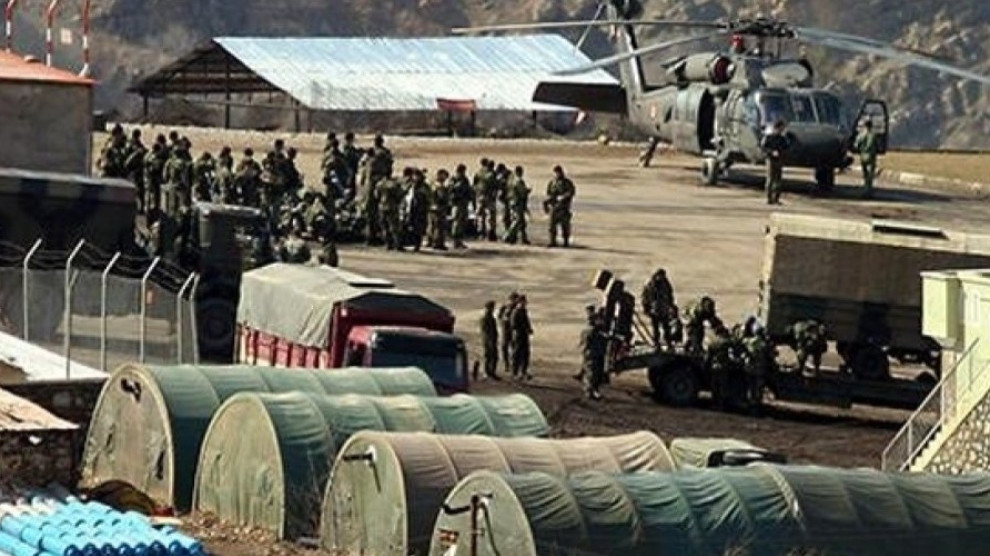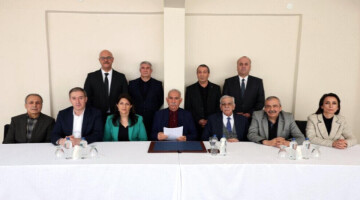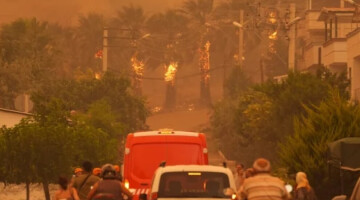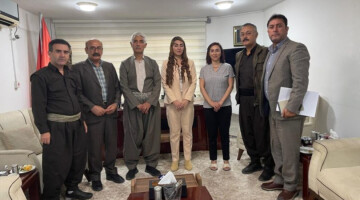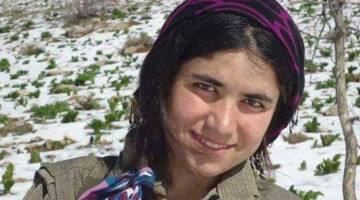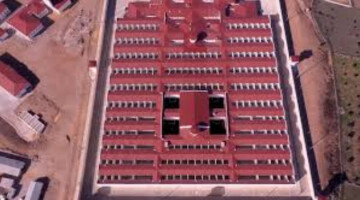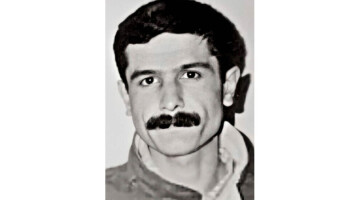The first military attack by the Turkish army was in 1983, called the Hot Pursuit Operation. The Border Security and Cooperation Treaty was signed between Ankara and Baghdad in 1983, giving the Turkish army authority to carry out operations on Iraqi soil up to 10 km. The first attack against the PKK guerrillas after the treaty was on May 25, 1983. 7.000 soldiers entered 5 km in from the border. Meanwhile, the Iraqi army attacked the PKK camps in the south.
The Turkish army’s Hot Pursuit Operation was followed by a second operation in 1984, when PKK camps were targeted. On August 12, 1986 a third operation was conducted. 14 soldiers died in the action against the Cukurca Gendarmerie Outpost by the PKK guerrillas.
The fourth operation was on March 4, 1987. Turkish jets bombed several areas in Southern Kurdistan. KDP targeted the PKK instead of protesting the Turkish army. The Turkish state wasn’t able to carry out cross-border operations between 1988 and 1991 because Baghdad didn’t allow it in those years.
The people of Bashur (Southern Kurdistan) launched an uprising from Ranya in 1991. In a short time it spread from Behdinan to Zakho, from Soran to Halabja. The Baath regime was removed from many areas in Bashur. The US stationed forces in the region, the Hammer Force. Southern Kurdistan’s borders were defined as the 36th-42nd parallels, and the area within these borders was closed for Iraqi air field.
After this step, in 1992 the US made KDP and PUK set up the Southern Kurdistan Parliament in Washington. The first and only resolution by the Parliament was declaring war against the Kurdish Freedom Movement. With this resolution, the KDP and PUK made a deal with the Turkish state and launched an attack against the Kurdish Freedom Movement in October 1992, the “Sandwich Operation”. This operation was the beginning of Turkish state attacks against the Kurdish Freedom Movement together with KDP and forces from Bashur.
After this attack, there was another attack titled the Steel Operation in March 1995. KDP led Turkish tanks and armored vehicles into Haci Umran, Coman and Pirdesale villages in 1997 to attack the Kurdish Freedom Movement guerrilla together with the invaders.
In 2007 airstrikes became more prevalent. The last ground operation was against Zap in February 2008. Since April 2018, these invasion attacks continue against the Xakurke, Shekif Mountain, Lolan Stream and their surroundings in the Bradost region.
SETTING UP THE TURKISH BASES
After the Bashur Parliament was founded and issued its first resolution of war with the PKK, the grand scale attack launched against the PKK guerrilla in 1992 was also when the invading Turkish state set up bases and invade parts of Southern Kurdistan. After the large scale attack the Turkish state settled in Duhok, Zakho and its surroundings in the form of MIT intelligence units and secret units. These units set up several bases. The bases and headquarters they formed were made official in 1996.
THE FIRST MILITARY BASE IN SELAHADDIN
According to the Turkish media, the first military base of the Turkish state in Southern Kurdistan was set up in the Salahaddin town, 25 km from Hewler, in 1994. There is also a unit that belongs to Turkish special units there. The significant part is that these bases were set up in Masoud Barzani’s town.
The Turkish army later settled their military units in Hewler, Zakho, Duhok, Diyana, Batufa, Bamerne, Amediye and Kanimasi areas as well.
THE BASES SET UP IN 23 YEARS
The bases the Turkish army set up in Southern Kurdistan in 23 years are as follows:
* Batufa military base
* Kanimasi (Girebaruxe) military base
* Bamerne logistical and airport military base
* Sinke military base
* Begova (Gire Biye) military base
* Geliye Zakho military base
* Sire (Sheladize) military base
* Sire (Sirte) military base
* Kupke military base
* Qimre military base in Berwari
* Koxe Spi military base
* Deriye Dawetiya military base
* Ciyaye Serzeri military base
* Military base in Zelkan at the skirts of the Maqlub Mountain
* Bashiqa (northeast of Mosul) military base
MIT HEADQUARTERS
There are also several MIT headquarters set up in Southern Kurdistan. Most of them are in Duhok. There are MIT headquarters in the Batufa town in the Zakho district, Zakho district center and Duhok.
The invading Turkish state has invaded several areas in the Bradost region since last year, on top of the known bases in Southern Kurdistan. The occupied areas are as follows:
* Lelikan
* Navmergan
* Xelkere
* Bilasinen
* Xelifan
* Geliye Res
* Araqa
* Xeme
* Bezine
* Benavok
* Cinaro
* Ciyaye Kitkin
* Resmele
* Sapane
* Kanires
* Qongre
* Sosine
The Shekif Mountain, the Martyr Dervis Hill in Xakurke, the Martyr Sarya Hill, and the surroundings of the Lolan Stream were added to this list after the attacks to deepen the invasion on May 28.
FORCES IN BASES
The number of soldiers and amounts of weapons and equipment the invading Turkish state has positioned in Southern Kurdistan’s invaded areas they set up bases in are as follows:
THE DIYANA AREA
* Binpistiye base area (along the road between Diyana and Rewanduz)
* Herire base area. There is a helipad in this base area and it is used as the headquarters for scout planes.
THE SAQLAWA AREA
They have 3 bases near Peshmerga barracks.
THE AMADIYA AREA
2 tanks are stationed next to the former district governorate in an attempt to control the district.
KANIMASI, SHELADIZE, BAMERNE
* There is 1 battalion in Kanimasi. There are 324 ranking officers, 50 tanks, 70 Hammer jeeps, 98 artilleries, 86 mortars. 77 RPG-7s, 90 DHSK guns, 47 military vehicles, 93 BKCs, 22 flare guns, 13 Howitzers and heavy artilleries, 11 landmine detection scanner, 54 satellite phones, 85 location devices and 12 location centers.
* There are 13 official locations in Duhok. Omer, a KDP official for intelligence, and Faruk Beg, who works under him, are connected to the Turkish officials in the name of the KDP. There are 980 Turkish soldiers in the Duhok area.
* There are 91 ranking officers in Batufa, between Duhok and Zakho, and 240 privates and 340 special forces units under them.
* Bamerne is a center used for logistics and supplies. There are 55 tanks, 18 Hammer jeeps, 16 mortars and 18 civilian buses (used for military transports) in the base.
* There are 414 soldiers, 6 tanks, 15 RPG-7s, 2 DHSK guns, 2 Hammer jeeps, 11 artilleries, 14 civilian buses, 11 Kanas weapons and 12 BKC guns in the Qirede subdistrict of Zakho.
* In an unnamed village in Batufa along the Batufa- Zakho route there are 16 ranking officers and one 120 mm mortar. The village is kept secret.
* On hills controlling the Amadiya district of Duhok there are 75 soldiers, 6 tanks, 3 DHSK guns, 6 mortars and 4 Hammer jeeps are stationed.
* On the Kubka hill in Duhok’s Amadiya district there are 130 soldiers and 2 tanks.
* There are 70 soldiers in Gire Spi and Deriye Dawetiya.
* There are 60 soldiers stationed on the Sere Seve hill.
* There are 34 soldiers stationed in Geliye Zakho.
* There are 45 soldiers stationed in Amadiya district center in Duhok.
The Turkish army has over 10.000 soldiers and military personnel in Southern Kurdistan.
PEOPLE OF BASHUR PROTEST
According to international law, a military force can’t cross into another state’s territory unless the state gives approval. The Turkish state’s military bases were set up by approval from the Federal Kurdistan Administration. When the plans for the military base in Bashiqa came up, the Federal Government announced that the Turkish soldiers were there under their knowledge.
The soldiers stationed there have attacked the people and the region several times. They have abducted and murdered citizens. And, they have attacked the Kurdistan Freedom Movement with every chance they got. The people of the region are protesting these forces and want them out.
The Iraqi government has asked the Turkish state to leave Iraq. The Federal Kurdistan Parliament itself also passed a resolution in 2005 to remove Turkish forces. But the KDP stopped the implementation of the resolution and the Iraqi state’s attempts.
The people of Bashur have protested the invasion of their lands by foreign powers constantly. The most visible of these protests was when the people surrounded the barracks to trap the Turkish soldiers inside when they wanted to attack the Amadiya and Bamerne areas in the Zap region in 2008.
The other most significant protest was the action in Deralok on January 25 against the Turkish state’s murder of civilians, despite security forces stopping them. The same day the people set off on a march towards the Sire Military base in Sheladize. They entered the base and set vehicles on fire. The people climbed over fences and entered the base despite security forces trying to stop them and chanted “Enemy Erdogan” and “Murderer Erdogan”. Thousands of people demanded that the Turkish state, which has been occupying Bashur for years, to leave their lands. 2 civilians were killed and 6 were wounded in the Turkish soldiers’ attacks. One of the deceased was a child.

